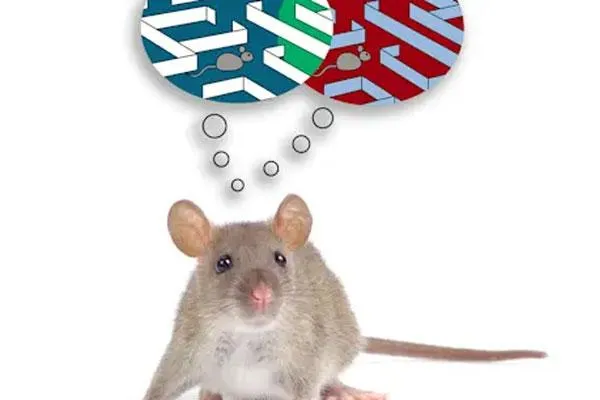
FTL1 & Brain Aging: UCSF Reverses Memory Loss in Mice
Scientists Reverse Age-Related Memory Loss in Mice by Targeting an Iron-Associated Protein (FTL1) — What That Means for Human Brain Health
Short version: researchers at UCSF identified an iron-associated protein called ferritin light chain 1 (FTL1) that increases in hippocampal neurons with age. Raising FTL1 in young mice produced age-like synaptic loss and memory problems; knocking it down in old mice restored synaptic complexity and improved memory performance. The work — published in Nature Aging — points to iron metabolism and neuronal bioenergetics as actionable pathways for cognitive rejuvenation, but it’s early and limited to rodents for now. NatureHome
The study in brief (methods & headline results)
Approach: The team used neuronal nuclei RNA-sequencing, proteomics (mass spectrometry), viral gene manipulation (shRNA/CRISPR conditional knockout), and behavioral tests focused on hippocampal function (novel object recognition, Y-maze) to compare young (≈3 months) vs. aged (≈18 months) mice. They localized changes to the hippocampus — the brain’s memory center. Nature
Discovery: FTL1 was the standout age-associated protein that rose in neuronal populations of aged hippocampi and correlated with worse performance on memory tasks. Nature
Causality tests: Overexpressing FTL1 in young mice produced synaptic simplification and memory deficits. Conversely, stereotaxic knockdown or conditional knockout of neuronal Ftl1 in aged mice restored synaptic markers and significantly improved memory performance on hippocampal tasks. NatureResearchGate
Mechanism clues: Elevated neuronal FTL1 changed iron biochemistry and depressed mitochondrial/metabolic functions (ATP synthesis pathways). Treating neurons with metabolic boosters (NADH supplements in vitro) mitigated FTL1’s pro-aging effects. Nature
Bottom-line result: targeting neuronal FTL1 in old mice reversed molecular, structural and behavioral hallmarks of hippocampal aging — a striking “rejuvenation” signal in rodents. HomeScienceDaily
How FTL1 fits into what we already know (iron, ferritin, and cognition)
Ferritin & brain iron: Ferritin proteins are the main intracellular iron storage molecules. A growing body of human research shows brain iron accumulation and elevated cerebrospinal fluid (CSF) ferritin associate with worse cognition and faster progression to Alzheimer’s disease in older adults. Longitudinal ADNI analyses found baseline CSF ferritin predicted cognitive decline and conversion from MCI to AD. PMC+1
Inflammation & microglial activation: Excess iron in brain tissue can promote oxidative stress and microglial activation, plausibly accelerating synaptic dysfunction and neurodegeneration — mechanisms consistent with the FTL1 mouse findings. PMC+1
So the UCSF findings don’t come out of nowhere; they converge with human biomarker work implicating iron/ferritin as a contributor (or marker) of cognitive decline. JAMA NetworkFrontiers
Mechanistic summary (what the authors propose)
FTL1 accumulation alters iron homeostasis in neurons, shifting labile iron oxidation states. That interferes with cellular metabolism. Nature
Reduced mitochondrial/ATP function follows, impairing energy supply for synaptic maintenance and plasticity. Nature
Synaptic simplification (fewer/shorter neurites, loss of synaptic markers) leads to detectable memory deficits on hippocampal tests. Home
Interventions that lower FTL1 or boost metabolism restore synaptic complexity and cognitive performance in mice. Nature
What the researchers and experts are saying
Saul Villeda, PhD (UCSF) — senior author — framed findings as more than delay: “It is truly a reversal of impairments.” He emphasizes the surprise that one neuronal protein could produce such broad age-related effects, and he notes metabolic boosting as a potential way to blunt FTL1’s impact. Home
Contextual expert reflections: commentary across outlets highlights the promise while urging caution — mouse brain rejuvenation is exciting but not proof of a safe, translatable human therapy yet. (See linked Nature Aging paper and UCSF press coverage for details.) NatureHome
Patient & family perspective — what this could mean (practical, cautious)
A hypothetical composite vignette (illustrative, not a real person): Mary, 74, with mild age-related memory complaints, hears about the FTL1 study. She asks her neurologist if reducing FTL1 is available now. The honest answer: not yet — the work is in mice and targeting neuronal proteins safely in humans requires years of safety, dosing and delivery studies. But the study opens avenues for new drug targets (small molecules, antisense oligonucleotides, gene therapies) or metabolic adjuncts that could one day slow or reverse cognitive aging. NatureHome
Practical current steps for families:
Continue evidence-based brain health practices (exercise, sleep, blood-pressure control, diabetes care).
Discuss participation in clinical registries or trials with neurologists if interested in early-phase aging/cognition studies.
Watch for clinical translation pathways (companion metabolic therapies, blood/CSF biomarker studies) in coming years. JAMA Network
Limitations & why we must not overinterpret
Mouse → human gaps: The work used powerful genetic tools and localized hippocampal interventions in mice. Human brain complexity, long lifespan, and off-target safety concerns present big translational hurdles. Animal reversals do not guarantee human efficacy. Nature
Delivery & safety: Targeting a neuronal iron-binding protein in humans would demand precise strategies to avoid systemic iron dysregulation or unintended toxicity.
Heterogeneity of human dementia: Alzheimer’s and age-related cognitive decline are multifactorial (amyloid, tau, vascular disease, inflammation, genetics). FTL1 may be one lever among many. PMC
Next steps researchers will likely take
Replication & mechanism deep-dives (other models, sex differences, dose–response). Nature
Biomarker translation: measure neuronal FTL1 or related iron metabolites in human CSF/brain tissue cohorts and relate to cognitive trajectories (ADNI-like cohorts). Prior CSF-ferritin work shows this is feasible and informative. PMCJAMA Network
Therapeutic development: small molecules, antisense oligonucleotides or metabolic adjuvants (NADH precursors etc.) to blunt FTL1 effects or boost neuronal metabolism — followed by safety testing. Nature
Related clinical human evidence (selected)
CSF ferritin & AD risk: multiple cohort analyses (including ADNI) show baseline CSF ferritin levels predict cognitive decline and conversion from MCI to AD, and associate with APOE-ε4 status — linking iron storage biology to human outcomes. PMCJAMA Network
Brain iron & cognitive decline meta-analyses show consistently higher iron deposition in AD brains and associations with faster decline. That human context increases plausibility for FTL1 as a relevant target. PMC
How to report this responsibly (editor’s note)
Lead with the exciting finding (reversal in mice) but immediately note translational limits.
Avoid claims that this “cures Alzheimer’s” — instead say it identifies a new target and restores memory in mice, which may guide future therapies.
Link to the Nature Aging paper and UCSF press release so readers can see primary data and author comments. NatureHome









